
DANIEL SERRANO
Rostros Físicos: The Latinx Physics Experience
NSF Awards: 1404843
Rostros Físicos is a multimedia project that celebrates Latinx and Latin American Physicists through a website (rostros.umd.edu), social media (@rostrosfisicos on Twitter and Instagram), and an episodic YouTube video series.
The goal is to help broaden participation in Physics by making accessible materials that highlight Latinx Physics role models for Middle School, High School, and college students, as well as their families.
Future goals include creating educational activities that teachers can pair up with the existing Rostros Físicos materials for educators to engage their students in discussions about the complexities of being a minority in Physics.
Rostros Físicos: The Latinx Physics Experience
NSF Awards: 1404843
Rostros Físicos is a multimedia project that celebrates Latinx and Latin American Physicists through a website (rostros.umd.edu), social media (@rostrosfisicos on Twitter and Instagram), and an episodic YouTube video series.
The goal is to help broaden participation in Physics by making accessible materials that highlight Latinx Physics role models for Middle School, High School, and college students, as well as their families.
Future goals include creating educational activities that teachers can pair up with the existing Rostros Físicos materials for educators to engage their students in discussions about the complexities of being a minority in Physics.
-
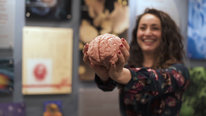 CEREBROedu: Exploring Neuroscience with Latinx Learners
CEREBROedu: Exploring Neuroscience with Latinx Learners
Alicia Santiago
-
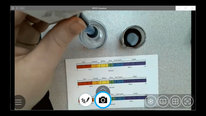 Virtual Science Teaching Strategies in Response to Pandemic
Virtual Science Teaching Strategies in Response to Pandemic
Sabrina Stanley
-
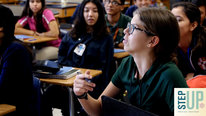 STEP UP Physics
STEP UP Physics
Zahra Hazari
-
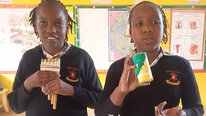 International Community for Collaborative Content Creation
International Community for Collaborative Content Creation
Eric Hamilton
-
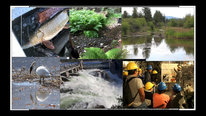 Voices to Hear
Voices to Hear
Shakuntala Gopal
-
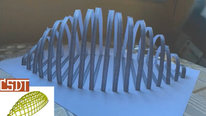 Restorative STEM: Educating for a Just & Sustainable Future
Restorative STEM: Educating for a Just & Sustainable Future
Ron Eglash
1660 Views
Continue the discussion of this presentation on the Multiplex. Go to Multiplex
1660 Views
presentation
has been viewed
Related videos you might be interested in...
-
 CEREBROedu: Exploring Neuroscience with Latinx Learners
CEREBROedu: Exploring Neuroscience with Latinx Learners
Alicia Santiago
-
 Virtual Science Teaching Strategies in Response to Pandemic
Virtual Science Teaching Strategies in Response to Pandemic
Sabrina Stanley
-
 STEP UP Physics
STEP UP Physics
Zahra Hazari
-
 International Community for Collaborative Content Creation
International Community for Collaborative Content Creation
Eric Hamilton
-
 Voices to Hear
Voices to Hear
Shakuntala Gopal
-
 Restorative STEM: Educating for a Just & Sustainable Future
Restorative STEM: Educating for a Just & Sustainable Future
Ron Eglash
Daniel Serrano
Senior Faculty Specialist
Hi, STEM for All attendees! As you'll hear in our video, Rostros Físicos is a multimedia project showcasing Latinx role models in Physics for high school and college students to see themselves better represented.
We'd love to hear your questions and perspectives about the project in the Discussion below.
We have already started publishing our videos on our channel and the next ways in which we want to grow are:
1. Create discussion rubrics for each video so that educators can use the videos + rubrics with their students in order to engage in discussions about what it means to become and be a scientist, the hurdles of pursuing such a career as a minority, identity, etc.
2. Host live online discussion events based on the content of our videos with high school and/or college students.
If you're an educator, organizer, student, etc. and would like to provide feedback about these ideas and/or to collaborate on such initiatives, we'd love to hear from you in the comments or directly.
Hola, participantes de STEM for All! Como han escuchado en el video, Rostros Físicos es un proyecto multimedia que muestra modelos a seguir Latinos en el campo de la física, para que estudiantes de secundaria y universidad se vean más representadas y representados.
Nos encantaría ver sus preguntas y perspectivas en esta Discusión.
Ya hemos empezado a publicar nuestros videos en nuestro canal y los siguientes pasos que queremos tomar son:
1. Crear hojas de ejercicio con preguntas de discusión para cada video, para que educadores puedan usarlas con sus estudiantes para tener conversaciones sobre qué significa ser científica, las barreras que existen para seguir estas carreras siendo minoría, identidad, etc.
2. Organizar eventos online en vivo con estudiantes de secundaria y/o universidad para ver y discutir nuestros videos.
Si eres educadora/educador, estudiante, etc. y quieres darnos consejo sobre estas ideas o quieres colaborar, nos encantaría escuchar de tí en los comentarios o directamente.
Kimberly Elliott
Thomas Smith
Professor
I love this project! What do you see as some of the school and family contexts in which the videos and discussion might occur? I am curious about what your outreach plan to Latinx students might look like.
Daniel Serrano
Senior Faculty Specialist
Thanks for the questions, Thomas.
Based on our background audience research, we would expect the videos to organically reach only students because of the format and the platforms we're using to host and engage. Though there's a possibility that students will share this with their family members, reaching a school and family context would require more directed approaches like (a) bringing awareness to the materials through family/education STEM-oriented events - e.g. career exploration days hosted by some one of our local community colleges - and (b) direct collaboration with educators at schools to include these materials in their informal curricula.
Still learning about how to implement these ideas as we discuss with stakeholders.
Mike Vargas
Physics Teacher
As a physics teacher in Arizona I can't explain nearly enough to people the desperate need for more physics teachers. At last count AZ had 170 certified physics teachers left in the entire state. Maybe less than 3% of those folks were people of color. I think what your working on is critical to physics education. My question is what kind of numbers are you seeing in your program and what do you think is the secret to engaging more people of historically underrepresented populations into physics?
Daniel Serrano
Senior Faculty Specialist
I appreciate that insight about the context in AZ, Mike.
Currently we're seeing relatively good levels of engagement in the online platforms for a small science-related program like this, but the issue is that we're not able to obtain specific information about what impact those numbers reflect: Are those viewing these videos being affected positively? Who specifically is watching? That's why our next steps are to create ways to engage directly with students through the video content, as a complement to just making the content available online.
We think an important aspect of engaging to those historically underrepresented in Physics is to change Physics from within so that it meets the interests, priorities, and needs of those groups. Although this project isn't able to change the Physics curriculum, research priorities, or professional culture directly, we created the content strategically to include more humanity, more acknowledgement of growth mindset, and embracement of failure as part of achieving success. We think this is a start.
Mike Vargas
Wonmai "Maia" Punksungka
Daniel, this is a nicely done video and I thoroughly support that ways in which you want to grow. Of the students you have interacted with you (or your team) and who have watched your videos, what has that interaction been like? How would you describe their thoughts on physics after being a part of your program?
Daniel Serrano
Senior Faculty Specialist
Thanks for the encouraging words, Wonmai.
To date, we've held one interactive viewing session with students and found that there was a vocal/engaged group and a more silent/listener group. From those who were participating actively, we found that they were interested in talking about intersectionality (they seemed to want to bring in their additional identities and experiences as minorities in order to bring additional depth to the conversation). We also found that the video content served as a platform for discussions about broader topics about justice, equity, diversity, and inclusion. Since this was a one-time interaction, it wasn't possible to get a sense of the long-term impact on their thoughts on physics. Hopefully we can get more perspective on this after we use the materials more times.
Daniel Zietlow
This is such a great project! Thanks for sharing it with us. How did you select the scientists to feature in your videos? Were they from your existing network?
Daniel Serrano
Senior Faculty Specialist
Thanks, Daniel!
We had a somewhat nonlinear approach to finding the final group that ended up as interviewees (especially affected by COVID last year). We started from our local networks, seeking Physicists from our university and nearby universities. Then we also went through affinity groups/venues and professional societies like SACNAS and APS. At every stage of the process, we also asked each person interested if they also knew anyone else who might be interested in the project. We found that those direct network connections were useful to get more scientists involved.
Daniel Zietlow
Thanks for the insight! It's one of the things I've definitely been thinking a lot about - how do we grow authentic relationships to expand our network.
Daniel Serrano
Daniel Serrano
Senior Faculty Specialist
It's a challenge for sure. If your group is interested in getting more detailed input or connections with the network we've already established (I see maybe there could be some overlap thematically within the Physicists we know, and you have Spanish-language components), I'd be happy to chat one-on-one!
Daniel Zietlow
Cool! I'm always game to bounce ideas around and connect with science video people. Let me check with my supervisor - I know one thing we've been thinking a lot about is connecting with more departments/fields outside of straight-up atmospheric science (since we have a lot of people in physics/chemistry/engineering working in atmospheric science, and a lot of MSIs don't offer atmospheric science as a degree).
Rebecca Vieyra
Doctoral Student
Daniel,
What a great project! I have a few questions:
Lastly, I am curious about your thoughts on the cultural transferrability of your videos and your project. I manage the Inter-American Teacher Education Network, which collaborates with teacher education institutions across 25 countries in Latin America and the Caribbean. We even have a collaboration between AAPT-Mexico and the Dominican Republic that makes use of STEP UP materials to encourage more students to consider physics careers. Are these people you feature from around the region, and are they all currently anchored in the U.S., or other geographic places? I wonder how relatable the stories are for people from other contexts.
Thanks!
Daniel Serrano
Senior Faculty Specialist
Thanks for the thoughtful questions, Rebecca!
The way we developed the interview questions was a bit more focused towards undecided undergrads, but we wanted to keep the door open for high school students to find useful content from them. To that end, we ended up editing the interview material into some themes that are more relevant to undergrads (e.g: "what technical skills do I gain from studying physics?"), others friendlier to high school students (e.g.: "what is physics?"), and others that we think would be useful for both (e.g.: "what types of careers can I pursue if I study physics?").
Yes! I've had STEP UP in the back of my mind but haven't tried to establish a collaboration yet. I'll take this as a needed nudge. The careers we identified were diverse, from accounting, to education, to medicine, to software development, to technology development.
The question of transferability is very important and something we thought about and struggled with during the development of the project (and continue to struggle with). About half of our interviewees were US-born/US-based and about half Latin America-born/Latin America-based. But despite this, the content of our videos does have a degree of US-centric priorities. I think Rostros Físicos conceptually does have potential to be useful in the Latin American context, but it would require for us to build videos from scratch for these audiences. A much longer-term goal I have is to create country-specific seasons of the series to cover various countries in Latin America and the Caribbean.
Thomas Smith
Rebecca Vieyra
Doctoral Student
Daniel,
Thanks for the detailed responses! I'm really delighted to hear that you are looking at broad physics careers, and that you are also really sensitive to the cultural transferrability.
Please do reach out to STEP UP. I think there could be some great cross-pollination there! If you are interested in learning more about the Mexico/RD collaboration and getting some perspectives from university and high school teachers and students in those countries about the transferraibility, I'd be happy to get hear from you! rvieyra@oas.org.
Daniel Serrano
Senior Faculty Specialist
Thanks, Rebecca! I'll reach out to take up your offer to chat more.
Marcia Gumpertz
Great project! The video made me smile.
Abigail Helsinger
Daniel Serrano
Senior Faculty Specialist
Thanks for the warm comment, Marcia!
Liz Diaz
Saludos:
Que proyecto tan maravilloso! Iniciativas como la suya son geniales porque además de motivar a las jóvenes a tener carreras en las disciplinas STEM, proveen un espacio para que las científicas compartan con colegas y ser reconocidas por sus logros. Muchas Felicidades por un trabajo extraordinario!
En nuestro proyecto tenemos una iniciativa similar, pero realizando un simposio anual donde las científicas cuentan sus historias de cómo se convirtieron en las científicas que son y comparten con niñas y jóvenes sus consejos . Además generamos un libro titulado Mujeres latinas en las ciencias.
Seria grandioso si en el futuro pudiéramos establecer una colaboracion!
Daniel Serrano
Senior Faculty Specialist
Hola, Liz. Gracias por el comentario.
La iniciativa dentro de su proyecto suena genial también. Me pasaré por el video para aprender más.
Me encantaría hablar luego para ver cómo podríamos colaborar.
Mary Stapleton
Hi Daniel,
I see you're a neighbor of mine- I'm at Towson University in Maryland. I love this idea. I actually just started a video project as well (although much smaller scale than yours!). But I, too, am interested in showing students a window into the STEM field that highlights and focuses on identity and how we need students to bring their whole self to the fields, even though past experiences may have them believe that they can't, or that they shouldn't. It was useful for me to read about how you are tracking your impact, as it can be quite challenging when you make these videos and put them out in in the world, but then try to figure out how to go beyond just 'number of views' to understand their impact.
It's exciting to me that you're focusing on Physics specifically, because that is definitely a field that heavily dominated by White males.
Mary
Daniel Serrano
Senior Faculty Specialist
Hi, Mary. I'd be happy to share insight into the video production + dissemination and also ideas/strategies for impact assessment if you're interested. Feel free to reach out (dsvolpe@umd.edu). Would also love to check out your videos if they're available somewhere.
Lisette Torres-Gerald
Hola, Daniel. Estoy feliz a encontrar de ver este video. I am so excited for this project, as a Boricua and former aquatic ecologist. If you are ever looking for a collaborator, please consider reaching out to me. I work for TERC researching race and gender equity in STEM. I am also interested in disability, as I am a co-founder of the National Coalition of Latinxs with Disabilities.
Daniel Serrano
Daniel Serrano
Senior Faculty Specialist
Gracias por darnos un vistazo, Lisette. I'd love to chat about potential ideas for collaboration and share about our backgrounds, stories and interests. I'll reach out!
Abigail Helsinger
Daniel - I really enjoyed your video, and your project is very interesting. You mentioned impact. How are you planning to measure impact?
Daniel Serrano
Senior Faculty Specialist
Thanks for checking out our project, Abigail!
Since our primary activities are to develop videos that get posted online, measuring impact is challenging beyond getting view statistics. Our hope is that our channel will grow sufficiently to engage viewers that will post comments on the videos, allowing us to see a more qualitative perspective of impact.
But beyond that, we think that in order to have and measure more meaningful impact, our project will have to evolve to have more interactive aspects (like the ideas we have about hosting live discussion events and creating discussion rubrics for informal educators to use with groups of students). If we manage to implement these, then measuring impact becomes more straightforward by collecting feedback from the event attendees and from the students and educators participating in discussions, and possibly even being able to ask these participants months/years later if these materials impacted them in some way.